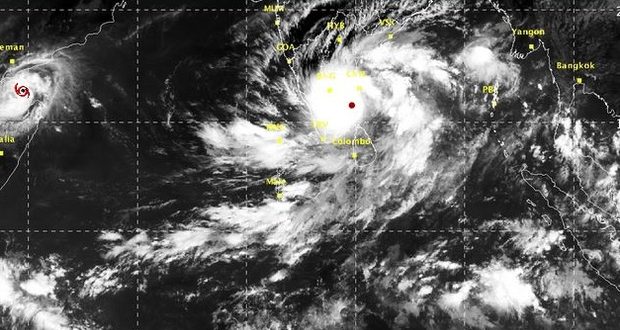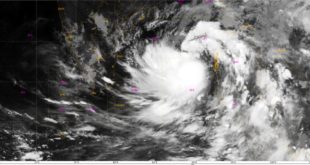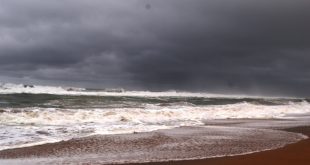Bhubaneswar: The cyclonic storm formed over the Bay of Bengal has been named as ‘Kyant’. Myanmar has named the cyclonic storm as Kyant. Interestingly, it is moving Northeastwards and reach close to North Myanmar coast.
Kyant means ‘crocodile’ in Mon language, which is spoken by Mon people, who live in Myanmar and Thailand.
The practice of naming tropical cyclones, which began years ago, is meant to help in their quick identification in warning messages as names were found to be much easier to remember.
A variety of naming systems has been used. The names selected are those that are familiar with the region.
The main purpose of using the name is to create awareness among people. Cyclones are named in a systematic procedure and this lies with an international committee of the World Meteorological Organisation.
There are eight northern Indian ocean countries which have prepared a list of 64 names. These countries are Bangladesh, India, the Maldives, Myanmar, Oman, Pakistan, Sri Lanka and Thailand. These countries take turns in naming the cyclones. They name cyclones formed over the Arabian Sea and the Bay of Bengal.
Generally, the names of cyclones are selected, which are easy to be used. It must not be culturally sensitive and inflammatory.
Every time a cyclone occurs, a name is picked in the order of the names submitted by these countries.
Several cyclonic storms have been named by these countries these include Phailin, Hudhud, Nilofar.
The Indian names include Agni, Akash, Bijli, Jal, Lehar, Megh, Sagar and Vayu.
Onil, Ogni, Nisha, Giri, Chapala, Ockhi and Fani are christened by Bangladesh. Hibaru, Gonu, Keila, Madi, Roanu, Mekunu and Hikaa are named by Maldives.
Pyarr, Yemyin, Phyan, Thane, Nanauk, Kyant, Daye and Kyarr are all Myanmar names while Fanoos, Laila, Nilam, Vardah, Titli and Bulbul are Pakistani names.
 Update Odisha-Latest Odisha News I Breaking News Get latest news on Odisha, Govt. Jobs, OSSC, OPSC, Entertainment, Crime, Sports, and Education
Update Odisha-Latest Odisha News I Breaking News Get latest news on Odisha, Govt. Jobs, OSSC, OPSC, Entertainment, Crime, Sports, and Education



